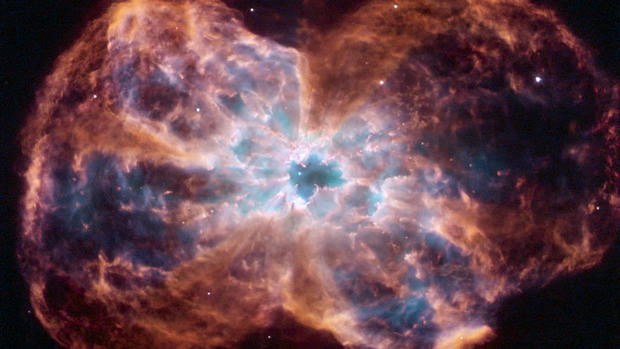Virtual spinning globe of Jupiter offers new look at Great Red Spot
Thanks to NASA's Hubble Space Telescope, we now have a new glimpse at Jupiter's most iconic feature - the Great Red Spot. New images show a wispy filament stream across the width of the red vortex, while a strange wave undulates just north of the equator.
These shots are seen in high-resolution, "spinning" maps of the planet, offering 360-degree perspectives of Jupiter rendered in 4K Ultra HD resolution. These Hubble images are the first edition of the Outer Planet Atmospheres program, an annual series of "portraits" of the outer planets of the solar system, according to a NASA release.
"Every time we look at Jupiter, we get tantalizing hints that something really exciting is going on," Amy Simon, planetary scientist at NASA's Goddard Space Flight Center, said in the release. "This time is no exception."
Simon and her team released two Jupiter maps compiled from images taken by Hubble's Wide Field Camera 3. The maps give a sense of the speed of the planet's winds by providing back-to-back rotations of the planet.
These findings are detailed in a paper published in the Astrophysical Journal.
When one thinks of Jupiter, the Great Red Spot immediately comes to mind. The new images show that the large swirling red vortex continues to shrink and assume a more circular shape over time. The long axis of the storm is now 150 miles shorter than it was in 2014, which while faster than normal, is still consistent with long-term observations Hubble has been making over the years.
One striking finding was the wave rolling just above the equator. It had been observed only once before. Back then, it was captured by Voyager 2, barely visible. This latest sighting of the wave - similar to baroclinic waves that appear in Earth's atmosphere - was made in a region marked by cyclone and anticyclone activity.
"Until now, we thought the wave seen by Voyager 2 might have been a fluke," said paper co-author Glenn Orton of NASA's Jet Propulsion Laboratory. "As it turns out, it's just rare."
New images of Neptune and Uranus have also been captured, and similar maps of those planets will be made available to the public, while Saturn will be added to the series at a later date.
"The collection of maps that we will build up over time will not only help scientists understand the atmospheres of our giant planets, but also the atmospheres of planets being discovered around other stars, and Earth's atmospheres and oceans, too," said co-author Michael H. Wong of the University of California, Berkeley.

